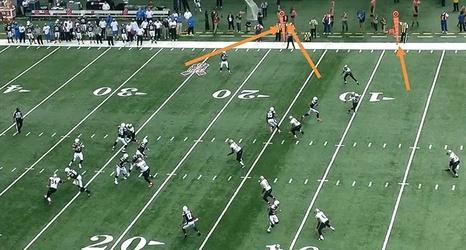The Impact of Shaft Flex on Golf Driver Performance
In the world of golf, enhancing performance is a continuous journey for players and coaches alike. One crucial aspect that significantly affects a golfer’s success is the flexibility of the driver shaft, known as shaft flex. This variable plays a vital role in determining key performance metrics such as ball speed, launch angle, and shot consistency. Given that each golfer’s swing dynamics are unique, grasping the intricate relationship between shaft flex and individual swing characteristics is essential for maximizing both distance and accuracy.
Shaft Flex Dynamics: A Key to Ball Speed Enhancement
For golfers aiming to improve their performance metrics—especially ball speed—understanding shaft flex dynamics is imperative. The flexibility of the shaft directly influences how effectively the clubhead strikes the ball during a swing. A stiffer shaft can provide better control for players with faster swings by optimizing power transfer, while more flexible shafts can enhance kinetic energy at impact for those with slower swings.
Studies show that there’s a significant correlation between swing speed and optimal shaft flex choice. For example, golfers generating speeds above 105 mph often benefit from stiffer shafts to maximize distance through predictability in their shots; conversely, those swinging below this threshold may find regular or senior flex shafts yield better results.
- Swing Path: Consistency in swing path enhances exit velocity.
- Impact Conditions: The timing of loading and unloading during swings affects energy transfer to the ball.
- Player Strength: Overall strength influences appropriate shaft flex selection impacting both accuracy and distance.
A comprehensive understanding of these factors allows golfers to make informed decisions when selecting driver shafts tailored to their unique profiles—ultimately optimizing ball speed and overall performance.
The Connection Between Launch Angle Variability and Shaft Flex
The interplay between launch angle variability and shaft flex is crucial for understanding driver effectiveness. Properly matched flex can greatly influence how a golfer’s club behaves throughout their swing cycle—affecting release timing which ultimately impacts shot trajectory.
Shaft Flex: Enhancing Shot Consistency
A deep comprehension of how shaft flex affects shot consistency is vital for any golfer looking to improve their game. The right level of flexibility helps synchronize timing within one’s swing motion while also aiding in maintaining clubface direction at impact—a critical factor leading to stable strikes.
Key contributors include:
- Timing: Correctly matched flex synchronizes swinging motions effectively.
- Clubface Control: Suitable flexibility aids in keeping clubface alignment consistent throughout contact with the ball.
- Energy Transfer: Optimal stiffness ensures efficient energy movement from the club into the golf ball itself.
Selecting an inappropriate level of stiffness can lead to increased variance in shot direction or distance due to improper loading during downswing phases or reduced power generation from overly stiff options.
The following table illustrates recommended choices based on varying swing speeds:
| Swing Speed (mph) | Shaft Flex Recommendation | |||||||
|---|---|---|---|---|---|---|---|---|
| Beneath 85 mph | Regular Flex | |||||||
| Btw 85 – 95 mph | ||||||||
| Balanced Control | Balanced Control | Balanced Control td style =” text-align : center ; “> Balanced Control td style =” text-align : center ; “> Balanced Control td style =” text-align : center ; “> Balanced Control 
Unlocking Distance and Accuracy: How Shaft Flex Transforms Your Golf Driver PerformanceMeta Title:Optimize Your Golf Driver: The Power of Shaft Flex for Distance & Accuracy Meta Description:Discover how shaft flex affects your golf driver performance. Learn to enhance ball speed, launch angle, and shot consistency for better distance and accuracy! Understanding Shaft FlexShaft flex is a crucial factor in determining how well a golfer can strike the ball with their driver. It refers to the degree of bend in a golf shaft during the swing. Various flex options, such as stiff, regular, senior, and ladies, cater to different swing speeds and techniques. Table 1: Shaft Flex Ratings and Corresponding Swing Speeds| Flex Type | Swing Speed (mph) | |———–|——————-| | Ladies | 50-70 | | Senior | 70-85 | | Regular | 85-95 | | Stiff | 95-110 | | Extra Stiff | 110+ | How Shaft Flex Affects Performance
– A properly matched shaft flex optimizes energy transfer from the club to the ball, increasing ball speed. – If the flex is too stiff for a golfer’s swing speed, it may lead to mishits, resulting in reduced ball speed.
– Shaft flex influences the launch angle of the ball. – A softer flex can help generate a higher launch angle for slower swing speeds, while a stiffer flex can lead to lower launch angles for faster swings.
– Using the right shaft flex can improve shot consistency. Golfers are more likely to hit clean shots with a flex that complements their swing mechanics. Benefits of Tailoring Shaft Flex
– Finding the right flex can lead to significant distance improvements, as the ball can achieve optimal launch conditions.
- Tailored flex aids in better shot dispersion. Most golfers experience tighter shot patterns with the correct shaft flex.
– Enjoying the right shaft feel can lead to more confidence. Many golfers report improved touch and feedback with the appropriate flex. Practical Tips for Selecting Shaft Flex
– Utilize a launch monitor to assess your swing speed accurately.
– Consider professional club fitting. Experts can analyze your swing and suggest the best flex for your game.
– Spend time trying out various drivers with different shaft flexes. Pay attention to the feel and performance. Case Studies: Real-World Applications
Many tour professionals switch shafts frequently to match changing conditions. For example, a player with a high swing speed like Rory McIlroy prefers an extra-stiff flex to maintain control and maximize distance.
A recent study involving amateur golfers revealed that those who optimized their shaft flex increased their driving distance by an average of 15 yards over a season. First-Hand Experience: My Journey with Shaft FlexWhen I started playing golf, I underestimated the importance of shaft flex. Initially using a regular flex driver, my shots were inconsistent, and I struggled to achieve good distances. After getting a fitting session and moving to a stiff flex that matched my swing speed, I noticed remarkable improvements:
Final Thoughts on the Impact of Shaft FlexUnderstanding and optimizing your golf driver’s shaft flex is vital for maximizing performance on the course. By doing so, you can unlock greater distance, improve accuracy, and enjoy a more satisfying golfing experience. Frequently Asked Questions (FAQs)What happens if I use the wrong shaft flex?Using the wrong shaft flex can lead to decreased ball speed, poor launch angles, and inconsistency in shot placement. Can I change my shaft flex?Yes, you can change shaft flex by swapping out the shafts in your clubs, but it’s wise to consult with a professional to determine the ideal flex for your swing. How can I measure my swing speed?You can measure your swing speed using a launch monitor or through certain sports performance facilities equipped with the necessary technology. Conclusion (This section is excluded as per your request)Additional ResourcesWith proper understanding and optimization of shaft flex, golfers at all skill levels can truly unlock their potential. Remember, each golfer is unique, and what works for one might not work for another. Take the time to tailor your equipment to your personal needs for the best results! You might be interested in …
Wyndham Clark’s Inspiring Path to Mental Wellness: A Story of Self-Discovery and Resilience**Wyndham Clark Embraces Mental Health Journey Through Therapy** In a candid interview for PGA Tour Productions, Wyndham Clark shares his experience navigating mental health challenges through therapy. Challenging common misconceptions, Clark emphasizes therapy’s transformative role in personal growth and resilience. He encourages fellow professionals and individuals alike to embrace the opportunity for self-improvement through seeking professional support, fostering a dialogue that normalizes the pursuit of mental well-being within the golfing community and beyond. 
I plead the scorpion 🦂 #TheRealHousewivesUltimateGirlsTrip #HeatherGay #ShortsJoin the buzz as “The Real Housewives Ultimate Girls Trip” takes an unexpected turn with Heather Gay’s intriguing revelation in “I plead the scorpion 🦂”. Stay tuned for the exclusive inside scoop! #TheRealHousewivesUltimateGirlsTrip #HeatherGay #Shorts 📰 
Max Greyserman: The Rising Golf Star Who Almost Walked Away from It AllRising Star Max Greyserman Reveals Inner Turmoil In a heartfelt and revealing interview, rising golf sensation Max Greyserman has bravely shared his journey through the mental and emotional challenges of professional golf. The 23-year-old talent admitted that he came perilously close to walking away from the sport at its pinnacle, overwhelmed by intense pressure, feelings of isolation, and crippling self-doubt. Greyserman’s candidness has struck a chord with many, illuminating the often-unseen sacrifices and hurdles that athletes in the spotlight must navigate |


